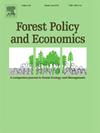同步保护措施对尼泊尔奇旺河谷森林邻近社区的影响
IF 3.8
2区 农林科学
Q1 ECONOMICS
引用次数: 0
摘要
尼泊尔临近森林的社区依靠牲畜饲料和木柴维持生计。本研究考察了重叠的保护工作——即社区林业(CF)和在科学森林管理(SFM)下推广的造林实践——如何影响了家庭对这些资源的获取。利用空间测绘、森林委员会调查和2014年1200多名受访者和2017年1400多名受访者的家庭数据,包括对600多个匹配家庭的纵向分析,我们评估了不同时间和不同社会群体收集饲料和木柴的旅行距离的变化。我们的模型揭示了关键预测因素的转变:仅在CF下,种姓和土地大小等家庭因素与旅行距离最相关。随着受sfm启发的做法的传播,森林管理活动成为更强有力的预测因素。虽然这些干预措施似乎改善了饲料获取,但边缘化群体(包括达利特、Terai Janajati和女性户主家庭)的木柴收集距离显著增加。这种分歧凸显了同时采取的保护措施如何产生不平等的生计结果。我们的研究结果强调了解决这些社会公平权衡的综合森林治理的必要性,并指出了未来使用混合方法和准实验设计来解开这些复杂政策相互作用的因果关系的研究的迫切需要。本文章由计算机程序翻译,如有差异,请以英文原文为准。
Effects of concurrent conservation initiatives on forest-adjacent communities in the Chitwan Valley, Nepal
Forest-adjacent communities in Nepal depend on livestock fodder and firewood for their livelihoods. This study examines how overlapping conservation efforts—namely, Community Forestry (CF) and silvicultural practices promoted under Scientific Forest Management (SFM)—have shaped household access to these resources. Using spatial mapping, forest committee surveys, and household data from over 1200 respondents in 2014 and 1400 in 2017, including a longitudinal analysis of over 600 matched households, we assess changes in travel distance to collect fodder and firewood across time and social groups. Our models reveal a shift in key predictors: under CF alone, household factors such as caste and land size were most associated with travel distance. Following the spread of SFM-inspired practices, forest management activities became stronger predictors. While these interventions appeared to improve fodder access, firewood collection distance increased significantly among marginalized groups, including Dalit, Terai Janajati, and female-headed households. This divergence highlights how concurrent conservation initiatives can produce unequal livelihood outcomes. Our findings underscore the need for integrated forest governance that addresses these social equity trade-offs, and they point toward a critical need for future research using mixed-methods and quasi-experimental designs to untangle the causal pathways of these complex policy interactions.
求助全文
通过发布文献求助,成功后即可免费获取论文全文。
去求助
来源期刊

Forest Policy and Economics
农林科学-林学
CiteScore
9.00
自引率
7.50%
发文量
148
审稿时长
21.9 weeks
期刊介绍:
Forest Policy and Economics is a leading scientific journal that publishes peer-reviewed policy and economics research relating to forests, forested landscapes, forest-related industries, and other forest-relevant land uses. It also welcomes contributions from other social sciences and humanities perspectives that make clear theoretical, conceptual and methodological contributions to the existing state-of-the-art literature on forests and related land use systems. These disciplines include, but are not limited to, sociology, anthropology, human geography, history, jurisprudence, planning, development studies, and psychology research on forests. Forest Policy and Economics is global in scope and publishes multiple article types of high scientific standard. Acceptance for publication is subject to a double-blind peer-review process.
 求助内容:
求助内容: 应助结果提醒方式:
应助结果提醒方式:


